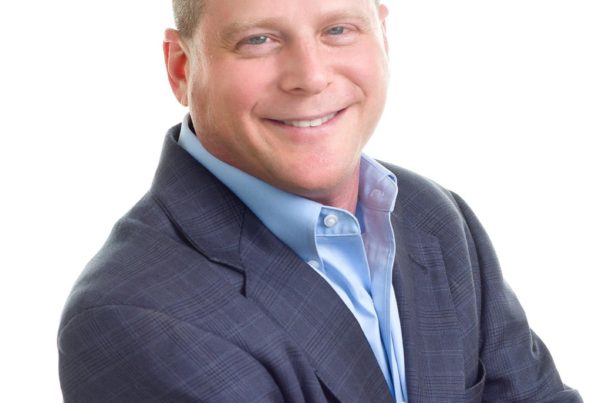(This column originally appeared in the Daily Herald)
According to a recent study from benefits provider Sharebuilder, only 24% of small businesses offer a 401(k) retirement plan for their employees.
This is despite retirement plans being among the most requested benefits desired by potential and existing workers and a significant shortfall in the amount that people are saving for retirement.
To help address this issue, Congress passed legislation in 2019 to incentivize more employers to help their workers save for retirement. That bill was given more teeth with the passage of SECURE 2.0 in 2022.
“It certainly is a good time to start a 401(k) plan,” said Jim Platania, a benefits adviser at Platania Financial, Inc. in Arlington Heights. “It’s obviously very important today to offer good benefits because it is so difficult in hiring people and SECURE 2.0 makes it much more attractive to establish a retirement benefit.”
Combined, both pieces of legislation offer many incentives for small businesses to start and expand their retirement plan offerings. If you’re running a small business, here are a few things you should know.
Tax credits
If your company doesn’t have a 401(k) retirement plan you can start one and the government will give you up to $15,000 in tax credits over a three-year period to offset your costs of startup and maintenance. Also, if your business has fewer than 100 employees, you can match participants’ contributions and receive up to a $1,000 tax credit per employee for that contribution. There’s also a tax credit for automatically enrolling new employees in your plan (although this will be required — with opt outs — beginning January for companies with more than 10 employees).
Chris Tipper of Hunter Benefits Group in Palatine says these credits are important because they can cover the cost of compliance and setup.
“There’s usually no money in a retirement plan to cover these costs, so it usually comes out of the employer’s pockets,” he said. “But with the setup portion of SECURE 2.0, an employer for the first three years can have most, if not all of their compliance costs covered.”
Roth 401(k)
When employees make pretax contributions to a regular 401(k) plan all they’re doing is deferring the taxes they owe until they withdraw money from these savings, although, thanks to SECURE 2.0, required withdrawals will be pushed back to the age of 75 by 2033 (it’s currently 73). But with a Roth 401(k), contributions are made after taxes have been paid and then grow completely tax free with no minimum withdrawals required in the future.
SECURE 2.0 now allows employers to contribute to these accounts on behalf of their employees, which is an additional retirement benefit you can provide.
“Be careful about vesting,” Tipper said. “With a regular 401(k) plan employer matches can vest over a period of time. But with a Roth 401(k) employer matches vest immediately.”
More part-time workers eligible
Under current law, employers are required to allow employees to join their plan if they have completed at least 1,000 hours of service in a 12-month period or 500 hours of service over three consecutive years, regardless of the plan’s standard eligibility requirements. SECURE 2.0 changes the three-year rule to two years.
Tipper said classifying workers will become a little trickier and, depending on the industry, some seasonal businesses and certain companies that employ more part-timers than others may see big changes.
“It’s a great idea,” he said. “But defining what is a part-time worker and what can be contributed still needs to be better clarified.”
Higher catch-up contributions
SECURE 2.0 raises the catch-up contribution limit to either $10,000 or 50% more than the standard catch-up limit (which is $7,500 for 2023) for individuals aged 60, 61, 62 and 63. Starting in 2026, these increased amounts will be adjusted for inflation. This change allows your older employees to put even more away for their retirement.
Emergency Savings Accounts and emergency withdrawals
SECURE 2.0 also has made it possible for employers to create Emergency Savings Accounts through which employees can save up to $2,500 of their pretax compensation and then use those funds for eligible emergencies. In addition, if employees need to make emergency withdrawals for things like federally declared disasters, terminal illness, domestic abuse or other emergencies, they can withdraw up to $1,000 (per year) from their 401(k) plan without any penalties.
Platania warns administration of these accounts can be complicated, but what’s even more concerning to him is using retirement funds for other purposes.
“I hate to see people tapping into their 401(k) for anything,” he said. “We tell our clients to encourage their employees to build up a side fund and save for such events so they’re not dipping into their retirement fund.”
Student loan match and emergency withdrawals
Student loan payments preclude many workers from putting money into their retirement accounts, so SECURE 2.0 has come up with a solution: employers can now match their employees’ student loan payments with a contribution to their 401(k) plan. Though supportive, Tipper and Platania say the devil’s in the details and, according to Tipper, “more guidance is needed from the IRS.”
All of the new provisions of SECURE 2.0 cannot only provide more retirement benefits for employees but also help employers recruit and retain talent. However, education will be key.
“You need your employees to be knowledgeable about what they have and what they don’t have,” he said. “An employer’s job is to educate their workers on what benefits exist and how they can maximize those benefits. Give them plenty of options so they can make the right choices.”

